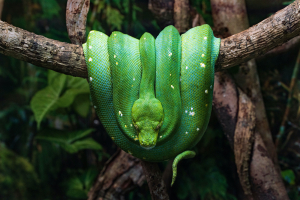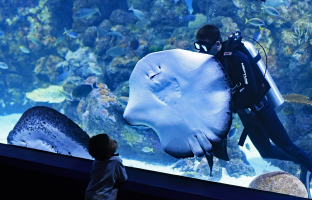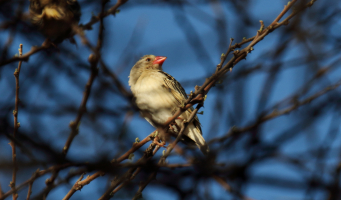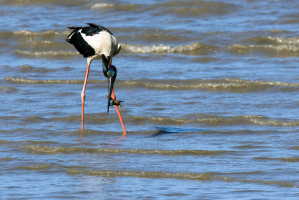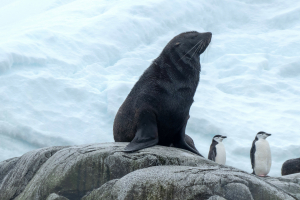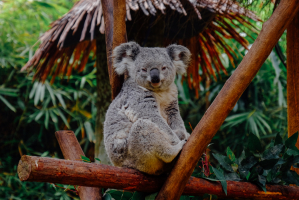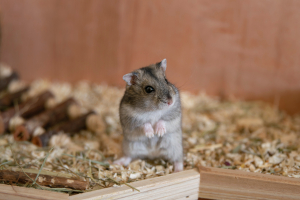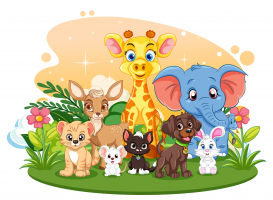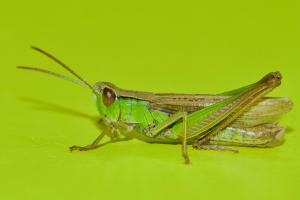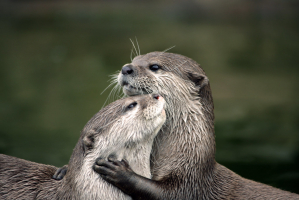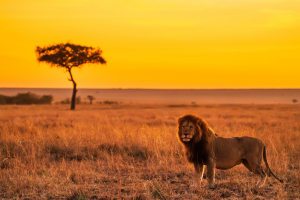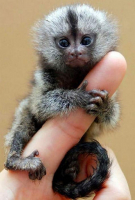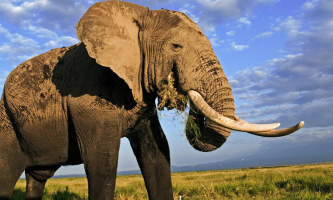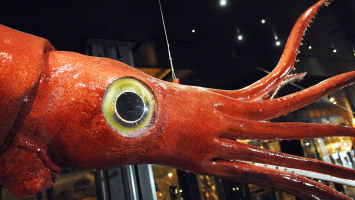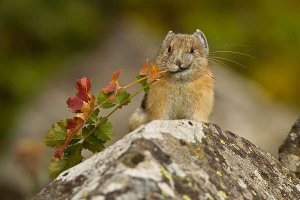Top 15 Common Animals That Start With "D"
From the diverse landscapes of the animal kingdom, several fascinating and often endearing creatures share a commonality in their names - they all start with ... read more...the letter "D." Let's explore a handful of these common animals, each bringing its unique characteristics to the natural tapestry.
-
Dogs, beloved and loyal companions, take a prominent place among common animals starting with the letter "D." Revered for their companionship, versatility, and unwavering loyalty, dogs have shared a unique bond with humans throughout history.
Domesticated from wolves thousands of years ago, dogs have evolved into a diverse array of breeds, each with its own characteristics and traits. From the energetic and playful Labrador Retriever to the regal and dignified German Shepherd, dogs come in various shapes and sizes, suited to different roles and lifestyles.
One of the most remarkable features of dogs is their adaptability. They integrate seamlessly into human households, forming strong emotional connections with their owners. Dogs have an innate ability to understand human emotions, providing comfort and companionship in times of joy and support during moments of distress. This deep connection has earned them the title of "man's best friend."
Beyond companionship, dogs serve various roles in society. Working dogs, such as guide dogs for the visually impaired, service dogs for individuals with disabilities, and search and rescue dogs, showcase the intelligence, trainability, and versatility that define the canine species. Their keen sense of smell, hearing, and agility make them invaluable partners in a range of tasks.
The diversity of dog breeds reflects the selective breeding practices humans have employed for specific traits. Whether it's a herding dog rounding up livestock, a hunting dog retrieving game, or a toy breed bringing joy and comfort, dogs contribute to the fabric of human life in multifaceted ways.
Caring for a dog involves responsibilities such as providing proper nutrition, regular exercise, grooming, and veterinary care. In return, dogs offer companionship, protection, and a source of joy that enhances the overall well-being of their human companions.

pexels.com 
pexels.com -
The Dark-eyed Junco (Junco hyemalis) is a small and charming bird that belongs to the sparrow family, Emberizidae. Widely distributed across North America, these juncos are known for their distinctive coloration, diverse sub-species, and adaptable nature, making them a familiar and beloved sight for birdwatchers in various regions.
One of the key characteristics of the Dark-eyed Junco is its variable plumage, which varies among different sub-species. The most widespread forms include the "slate-colored" junco with a dark gray hood, back, and wings, and the "Oregon" junco with a darker hood and rich brown back. Other sub-species, such as the "pink-sided" and "gray-headed," exhibit unique combinations of colors, providing bird enthusiasts with a fascinating array of patterns and variations.
The Dark-eyed Junco is a migratory bird, and its range extends from the northern forests and tundra during the breeding season to more southern latitudes in the winter. These migrations result in variations in the appearance of the Dark-eyed Junco populations, creating a dynamic and ever-changing presence in different regions throughout the year.
In terms of habitat, Dark-eyed Juncos are highly adaptable and can be found in a variety of environments, ranging from alpine meadows and coniferous forests to suburban gardens and open fields. They are ground-dwelling birds that forage for seeds, insects, and small invertebrates on the forest floor. Their diet is diverse, with seeds being a staple during the winter months when insects are less abundant.
The Dark-eyed Junco is well-known for its behavior of "double-scratching" the ground to uncover food. This involves hopping forward and backward while simultaneously raking both feet backward, a distinctive foraging behavior that sets them apart. Their social structure is often loose, and they may form flocks during migration or when foraging in open areas.
While the Dark-eyed Junco is not known for elaborate songs, it communicates using a variety of soft, musical trills and calls. These vocalizations are essential for maintaining social bonds, signaling alarm, and establishing territory.
For birdwatchers and researchers alike, the Dark-eyed Junco serves as a fascinating subject due to its adaptability, varied plumage, and behavioral nuances. Conservation efforts for these birds focus on preserving diverse habitats, as changes in climate and land use can impact their breeding and wintering grounds.
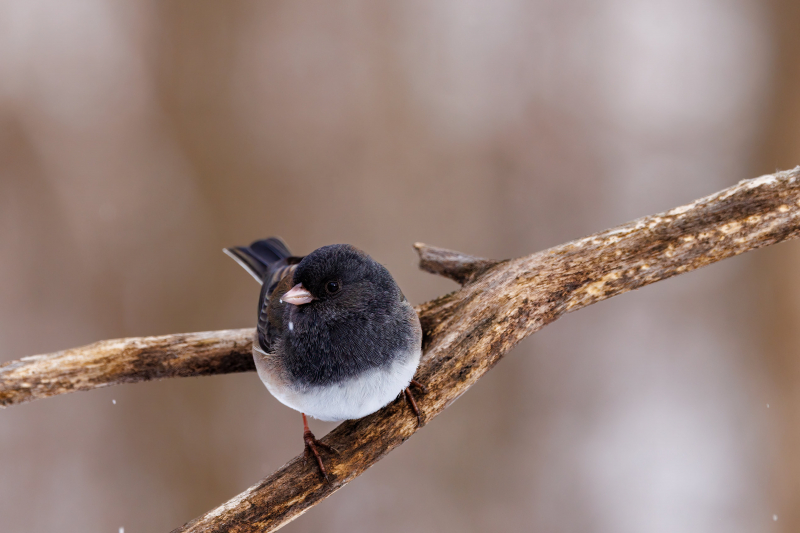
pexels.com 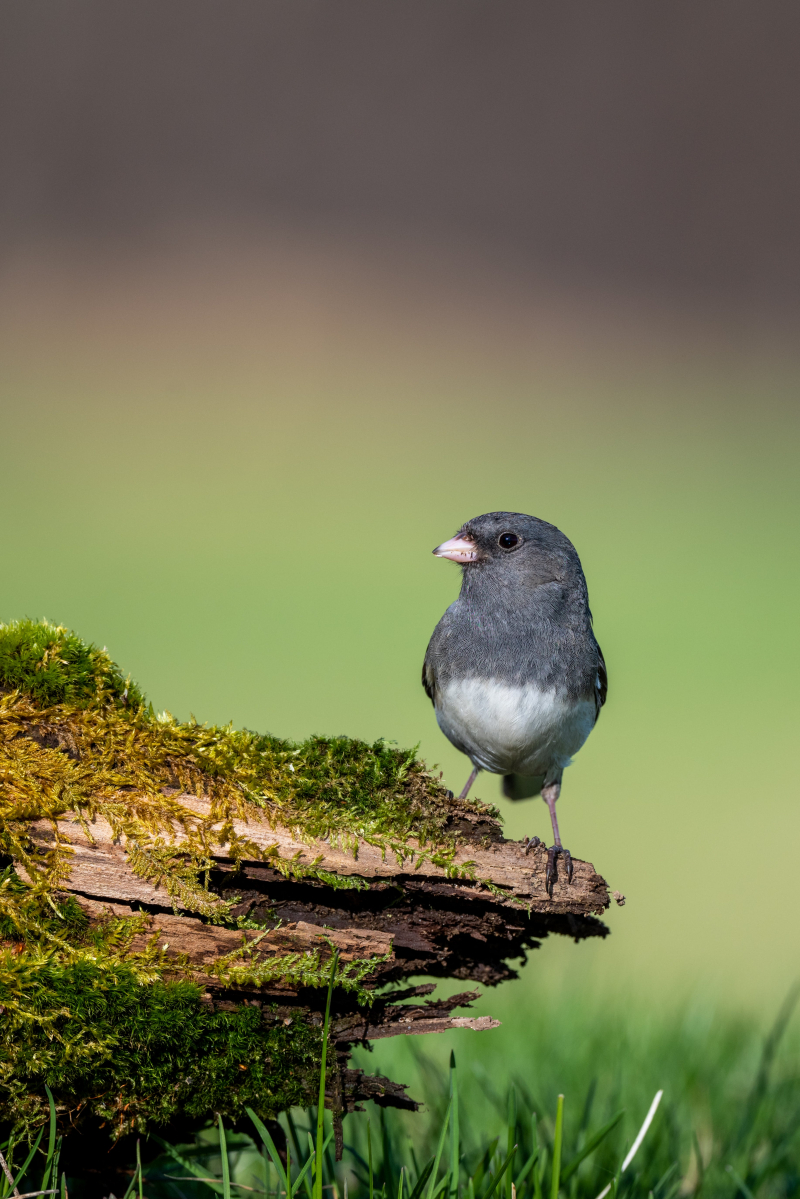
pexels.com -
Dassie rats, also known as rock rats or rock hyraxes, belong to the family Procaviidae and are not true rats. They are small, herbivorous mammals found in rocky habitats across Africa and the Middle East. Despite their name, these creatures are more closely related to elephants than to true rats.
Dassie rats have a robust and compact body, with strong, clawed feet adapted for climbing on rocky surfaces. Their fur color varies, ranging from shades of gray and brown to reddish-brown, providing effective camouflage in their rocky environments. Their ears are small, and their eyes are large, contributing to their keen senses.
These mammals are well-adapted to life in rugged, rocky terrains. They are excellent climbers, using their sharp claws to navigate steep cliffs and rocky outcrops. Dassie rats are social animals and often live in colonies, taking advantage of the sheltered crevices and ledges in the rocks. They are primarily diurnal, being active during the day, and spend their time foraging for vegetation, such as leaves, fruits, and bark.
Dassie rats are known for their distinctive vocalizations, including high-pitched whistles, grunts, and clicks. These vocalizations play a crucial role in communication within colonies, helping them establish territories, warn of predators, and coordinate social interactions. They have a complex social structure with dominant individuals leading the group.
One of the fascinating aspects of dassie rats is their physiological adaptation to temperature regulation. Given their rocky habitats, which can become extremely hot during the day, dassie rats have a specialized thermoregulation system. They can enter a state of torpor to conserve energy during the hottest periods, lowering their metabolic rate and body temperature until the cooler evening hours.
Dassie rats have a unique reproductive system. Females typically give birth to one or two precocial young at a time, which are born with their eyes open and covered in fur. The young are well-developed and can start foraging with the group shortly after birth.
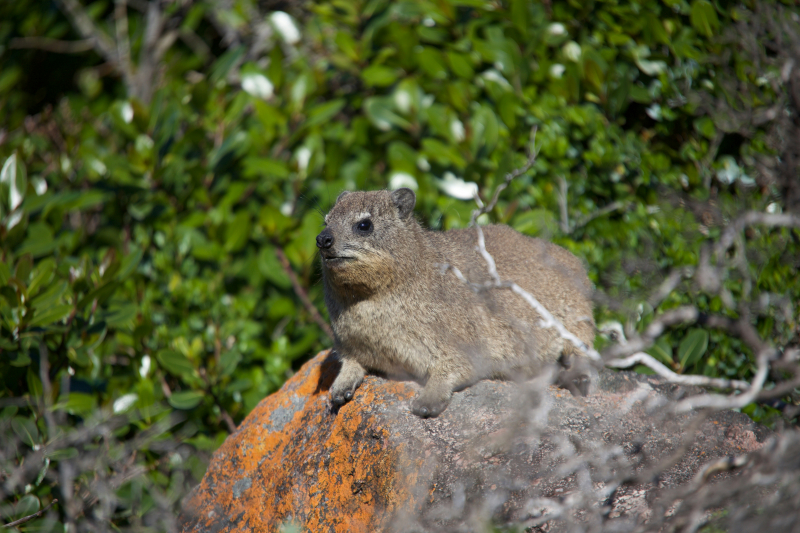
unsplash.com 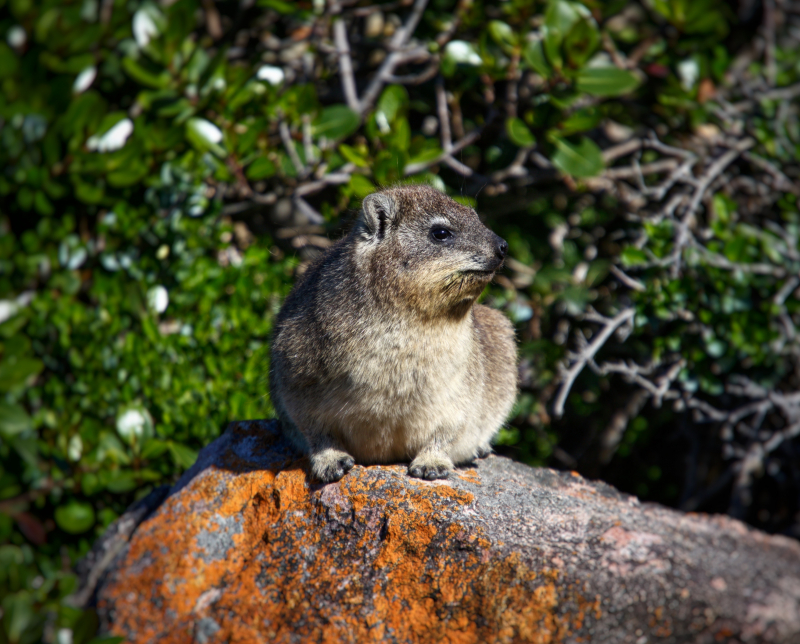
unsplash.com -
The deathwatch beetle is a type of wood-boring beetle that is commonly found in Europe. Its name comes from the fact that the ticking or clicking sound it makes while in the larval stage is said to resemble the ticking of a clock, which was likened to the "death watch" kept beside a dying person. This sound is made by the larvae as they bore through the wood and is a result of their mandibles clicking together.
Deathwatch beetles are small insects, usually measuring between 5-7 millimeters in length as adults. They have a cylindrical, elongated body and are dark brown to black. The larvae are white and have a characteristic "C" shape.
The deathwatch beetle's life cycle is quite long, with the larvae taking several years to mature. The larvae bore through the wood, creating tunnels and galleries as they feed. This can cause significant damage to wooden structures, including furniture, flooring, and buildings. The larvae can take up to several years to mature, and during this time they can cause extensive damage to the wood they inhabit.
In the wild, deathwatch beetles can be found in a variety of habitats, including deciduous and coniferous forests, where they feed on dead or dying trees. They are also commonly found in urban areas, where they can be a pest in buildings and other structures made of wood.
Deathwatch beetles are not considered a public health hazard, but they can cause significant damage to wooden structures. The larvae create tunnels and galleries as they feed, and this can weaken the structural integrity of the wood. The presence of deathwatch beetles can also lower the value of wooden furniture and structures.
Preventing deathwatch beetle infestations is key to protecting wooden structures. This can be done by keeping wooden structures dry, as the beetles are attracted to moist wood. It is also important to inspect wooden structures regularly, looking for signs of infestation, such as small holes in the wood or the presence of larvae or adult beetles.
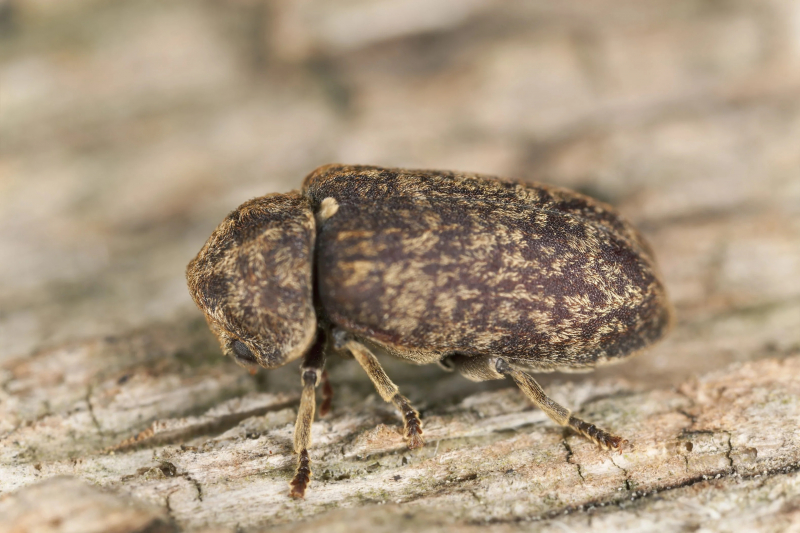
atlasobscura.com 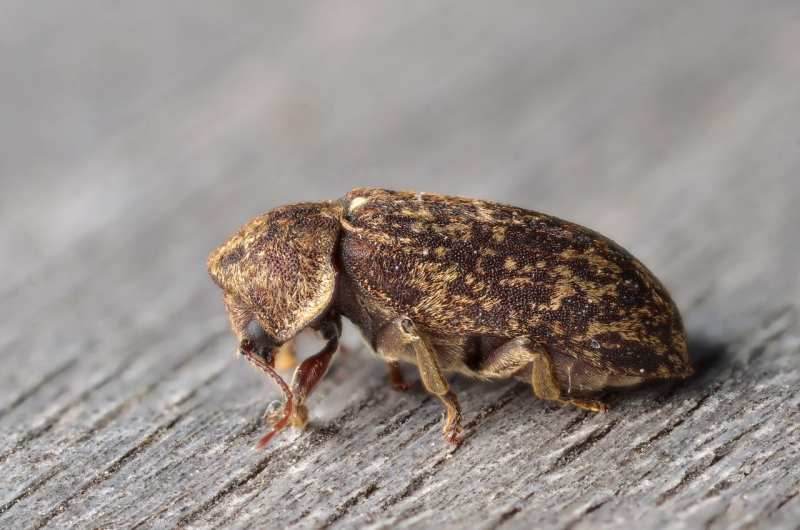
platinumchemicals.co.uk -
Deer, belonging to the family Cervidae, are graceful and herbivorous mammals widely recognized for their iconic antlers and slender bodies. Representing a diverse group of species, deer are found across various ecosystems worldwide, from dense forests to open grasslands. These creatures hold cultural significance, are admired for their beauty, and play crucial roles in shaping ecosystems.
Characterized by their long legs, slender bodies, and cloven hooves, deer are well-adapted to a herbivorous lifestyle. The males, or bucks, are often distinguished by their antlers, which are grown and shed annually. Antlers are used primarily for intra-species competition during the breeding season and are shed afterward, regrowing in a cyclical pattern. Females, or does, generally lack antlers.
Deer exhibit a wide range of sizes and colors depending on the species. The white-tailed deer, for example, is named for the distinctive white underside of its tail, which it flashes as an alarm signal when sensing danger. Other species, like the mule deer, have large, mule-like ears and a darker coat. The reindeer, or caribou, is adapted to colder climates, featuring thick fur and wide, concave hooves for traversing snowy landscapes.
One of the most notable behaviors in deer is their seasonal migration. In response to changing weather conditions and availability of food, deer may undertake long-distance movements between their summer and winter ranges. This behavior is particularly well-documented in species like the caribou, which undergo extensive migrations to find suitable forage throughout the year.
Deer play essential roles in their ecosystems as herbivores, influencing vegetation dynamics and contributing to seed dispersal. They are selective grazers, consuming a variety of plant species, and their foraging activities can shape the composition of plant communities. In turn, deer are prey for a variety of predators, including wolves, mountain lions, and humans.
The relationship between deer and humans has historical and cultural significance. In many cultures, deer are symbols of grace, gentleness, and the cycle of nature. They are also valued for their meat, hides, and antlers. However, human activities, such as habitat destruction, hunting, and vehicle collisions, can pose significant threats to deer populations.
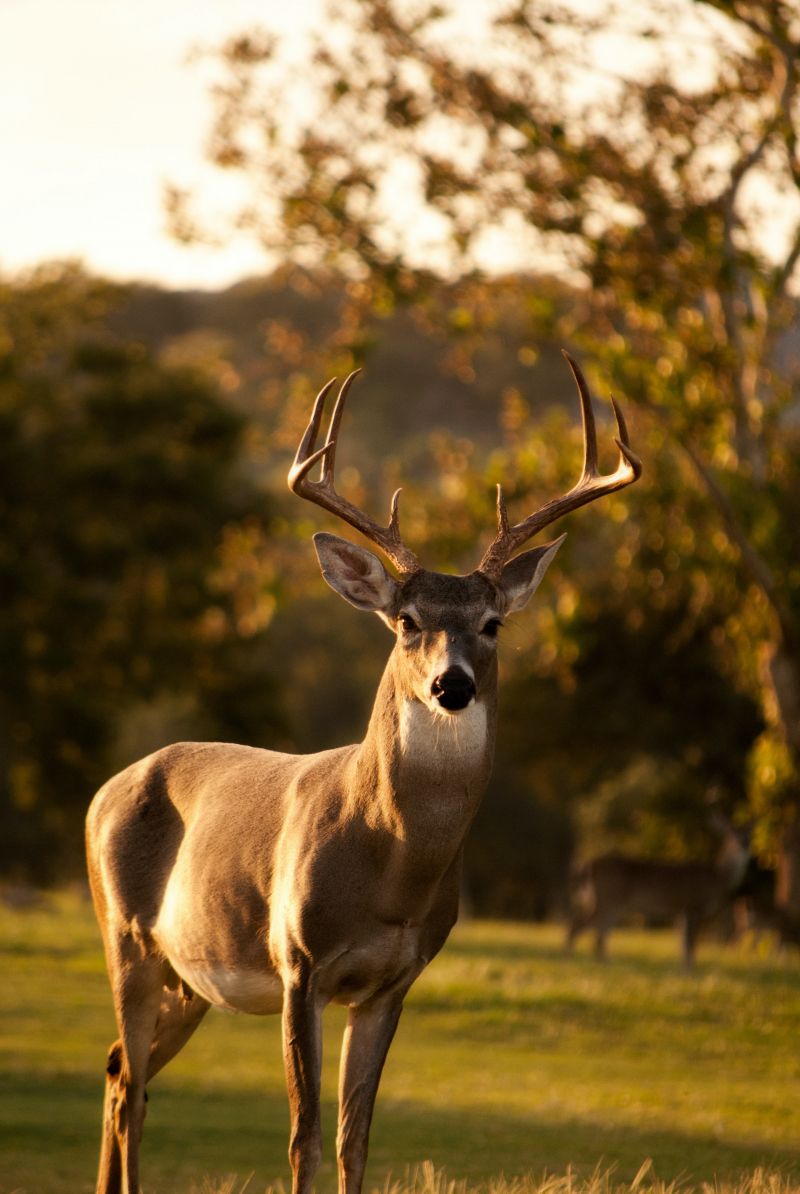
unsplash.com 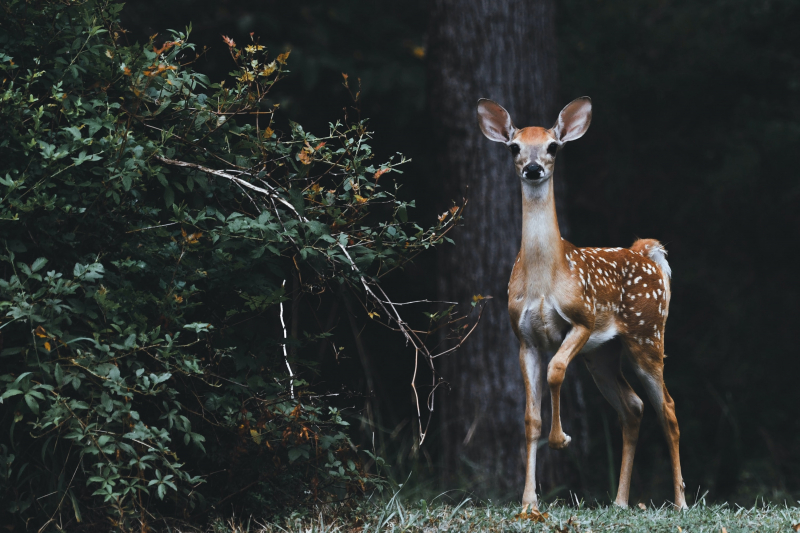
unsplash.com -
Known as one of the most common animals that start with "D", the degu (Octodon degus) is a small and sociable rodent native to the arid regions of Chile. These fascinating creatures are known for their unique characteristics, complex social structures, and remarkable communication skills, making them popular pets and subjects of scientific study.
Degus are small rodents with a body length of around 5 to 6 inches, not including their bushy tails that can add another 5 to 6 inches. Their fur is typically agouti, a mix of brown and gray, providing effective camouflage in their natural habitat. Their large eyes and prominent ears contribute to their endearing appearance.
One of the most notable features of degus is their complex social behavior. In the wild, degus live in colonies that can consist of several individuals. Within these colonies, they establish hierarchies, and social interactions involve various behaviors such as grooming, play, and vocalizations. Degus are highly vocal animals and communicate through a range of sounds, including chirps, barks, and whistles. Their ability to vocalize plays a crucial role in coordinating group activities and signaling potential threats.
Degus are herbivores with a diet primarily composed of grasses, seeds, and hay. They have continuously growing teeth, so a diet rich in fibrous materials helps keep their teeth worn down. In captivity, it's essential to provide them with a balanced diet to maintain their health and prevent dental issues.
These rodents are known for their remarkable cognitive abilities. Studies have shown that degus are capable of learning complex tasks, and their problem-solving skills are comparable to those of larger rodents like rats. Their intelligence and curiosity make them engaging and interactive pets.
In the wild, degus construct elaborate burrow systems, providing shelter and protection from predators. In captivity, they exhibit natural digging and tunneling behaviors, and providing them with a suitable environment that allows for these activities is essential for their well-being.
Degus have become increasingly popular as pets, but they require specific care to thrive. Proper housing, a balanced diet, and opportunities for social interaction and mental stimulation are crucial for their health and happiness. Due to their social nature, it's generally recommended to keep degus in pairs or small groups to prevent loneliness and stress.
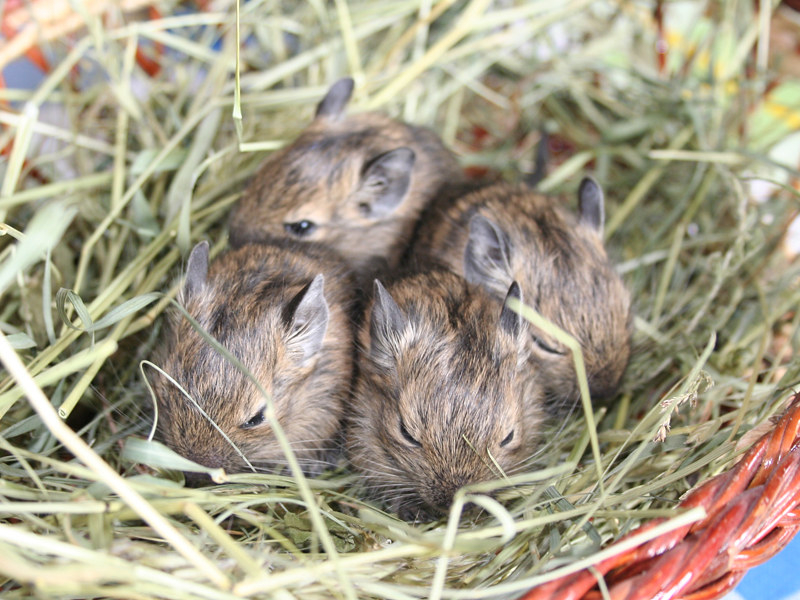
flickr.com 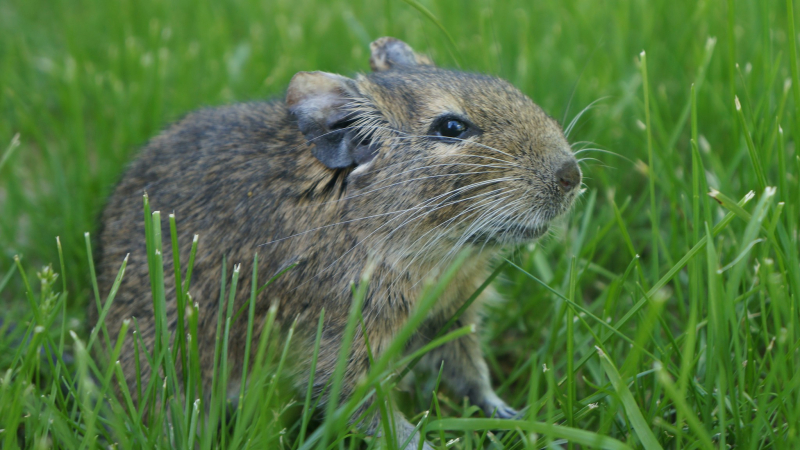
flickr.com -
The desert tortoise (Gopherus agassizii) is a fascinating and iconic reptile native to the arid regions of the southwestern United States and parts of Mexico. Recognized for its distinct appearance, remarkable adaptations, and importance in desert ecosystems, the desert tortoise plays a crucial role in maintaining ecological balance.
Characterized by a high-domed carapace and sturdy, elephantine hind limbs, the desert tortoise has evolved to thrive in harsh desert environments. The upper part of its shell, or carapace, exhibits a dark, mottled pattern, providing effective camouflage in the rocky and sandy landscapes it inhabits. The desert tortoise is equipped with powerful limbs and sharp claws that aid in burrowing and climbing, allowing it to navigate its challenging terrain.
One of the most notable adaptations of the desert tortoise is its ability to endure extreme conditions. To cope with the scarcity of water in its arid habitat, the desert tortoise has evolved to obtain much of its hydration from the succulent plants it consumes. During periods of water abundance, these tortoises can drink copiously, storing water in their bladders to sustain them during drier times. Additionally, they have the ability to estivate, a state of dormancy similar to hibernation, during the hottest and driest months, conserving energy and minimizing water loss.
Desert tortoises are herbivores, with their diet consisting primarily of various native plants, grasses, and wildflowers. Their feeding habits contribute to seed dispersal and the maintenance of plant diversity in their ecosystems. As ecosystem engineers, they play a vital role in shaping the landscape through their foraging and burrowing activities.
The life history of the desert tortoise is characterized by slow growth and delayed maturity. They have a long lifespan, with individuals capable of living for several decades. The reproductive success of desert tortoises is also tied to the availability of resources, with females producing relatively few eggs in response to environmental conditions.
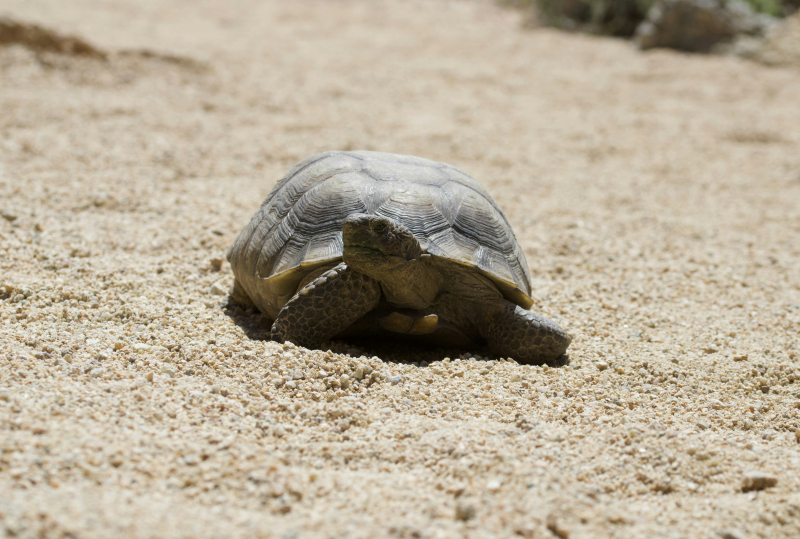
unsplash.com 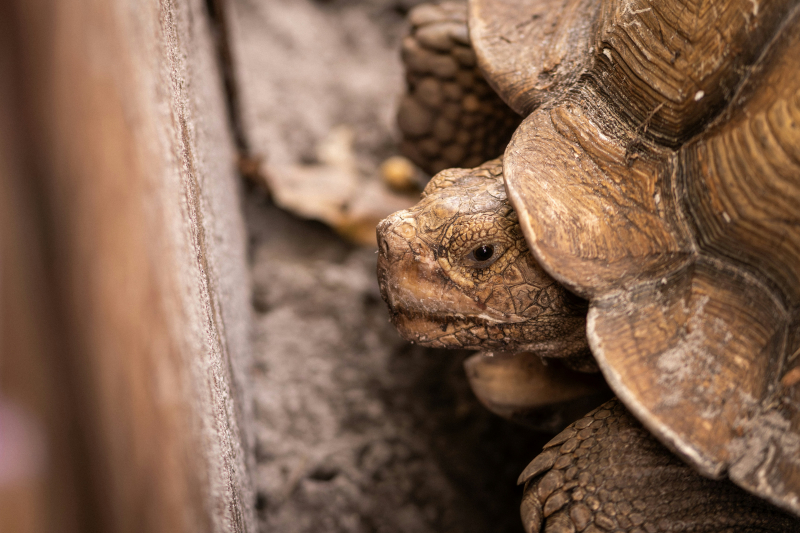
unsplash.com -
The dhole (Cuon alpinus), also known as the Asiatic wild dog or Indian wild dog, is a highly social and elusive canid species native to various parts of Asia. Recognized for its unique characteristics and cooperative hunting strategies, the dhole plays a distinctive role in the ecosystems it inhabits.
The dhole exhibits a slender and agile build, with a reddish-brown coat, white markings, and a bushy tail. It typically stands at shoulder heights of around 17 to 21 inches and has a length of approximately 2 to 3 feet, excluding the tail. Their appearance is often likened to a mix between a fox and a domestic dog. Unlike many other canids, dholes have fewer teeth, and their skulls are more robust, reflecting their adaptation to a specialized hunting lifestyle.
Dholes are highly social animals, living in tight-knit packs that can range in size from a few individuals to over 20 members. The pack structure is organized hierarchically, with an alpha pair leading the group. This social cohesion is crucial for their cooperative hunting strategies, where they work together to bring down prey much larger than themselves. This collaborative hunting behavior sets them apart from other canids.
The dhole's diet is diverse, encompassing various ungulates, such as deer and wild boar, as well as smaller mammals like rodents. Their hunting tactics involve strategic planning, synchronized movements, and effective communication within the pack. Despite their prowess as hunters, dhole populations have faced challenges due to habitat loss, fragmentation, and competition with other predators.
These canids are highly adaptable, found in a range of ecosystems from dense forests to open grasslands. However, they prefer habitats with a mix of cover for ambush and open spaces for pursuit during hunts. The distribution of dhole populations extends across countries such as India, China, Southeast Asia, and parts of Russia.
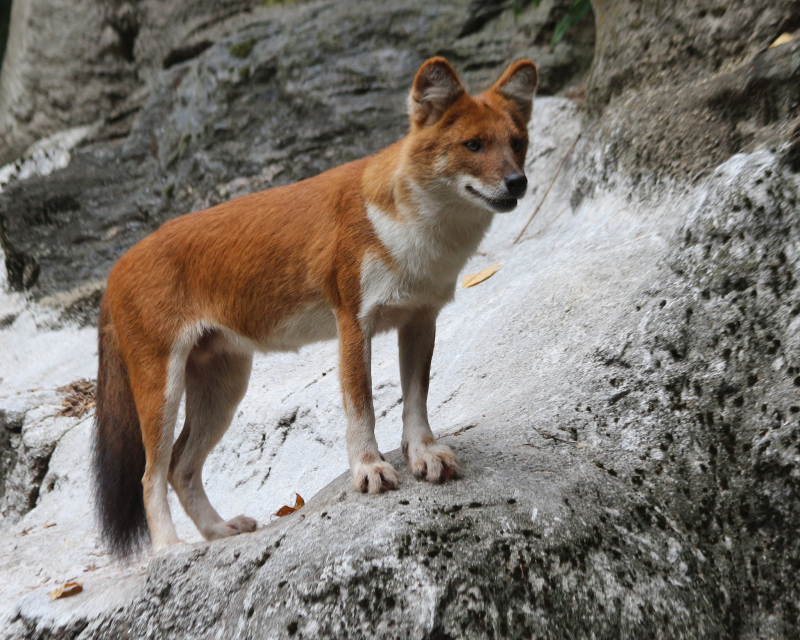
flickr.com 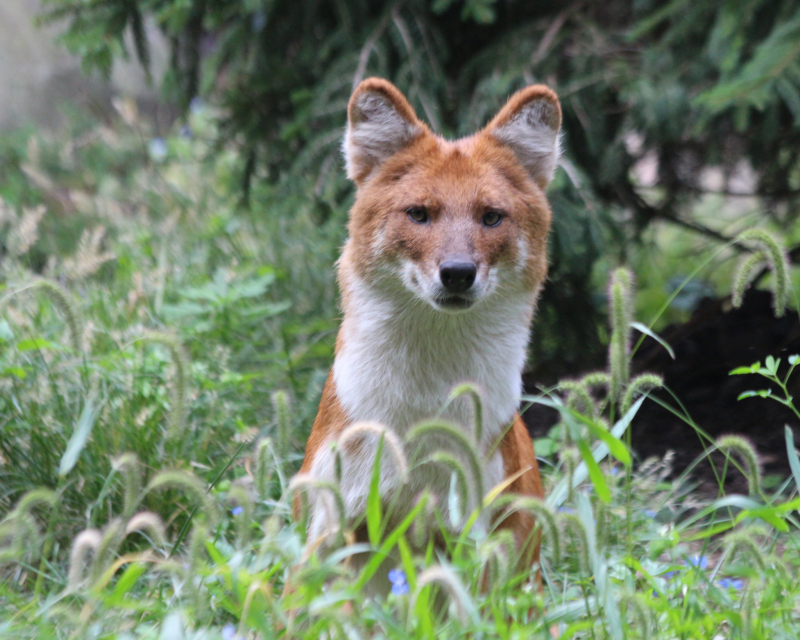
flickr.com -
The dik-dik, a petite and charming antelope species belonging to the family Bovidae, is renowned for its diminutive size, distinctive appearance, and elusive nature. Found in diverse habitats across Eastern and Southern Africa, these small ungulates are not only captivating to observe but also play a vital role in the ecosystems they inhabit.
There are several species of dik-dik, with the Kirk's dik-dik (Madoqua kirkii) being one of the most well-known. Adult dik-diks stand at a mere 12 to 16 inches at the shoulder, making them one of the smallest antelope species. They are characterized by a compact build, large eyes, and a pointed snout. The name "dik-dik" is derived from the sound they make when alarmed, a high-pitched whistling noise.
Dik-diks are adapted to a life of evasion and concealment. Their small size allows them to navigate through dense vegetation, and they are well-known for their agility and speed. When threatened, dik-diks rely on their sharp senses, including keen eyesight and acute hearing, to detect predators such as lions, cheetahs, and birds of prey. Their cryptic coloration, a combination of grays, browns, and reddish hues, provides effective camouflage in their natural habitats.
These herbivores primarily feed on a diet of leaves, shoots, fruits, and flowers. They are selective browsers, choosing a variety of plant species for their nutritional needs. Dik-diks have also evolved to extract moisture from the food they consume, allowing them to survive in arid and semi-arid environments where water sources may be limited.
Dik-diks are known for their monogamous mating habits, forming lifelong bonds with a single mate. These pairs establish territories, marking them with preorbital gland secretions and dung middens. Their territories are defended vigorously, and the pair communicates using various vocalizations, including the distinctive alarm whistle that gives them their name.
Female dik-diks give birth to single offspring after a gestation period of around five to six months. The young dik-dik, known as a fawn, quickly becomes mobile and follows its parents, learning essential survival skills. The family unit remains cohesive, contributing to the social structure of these small antelopes.
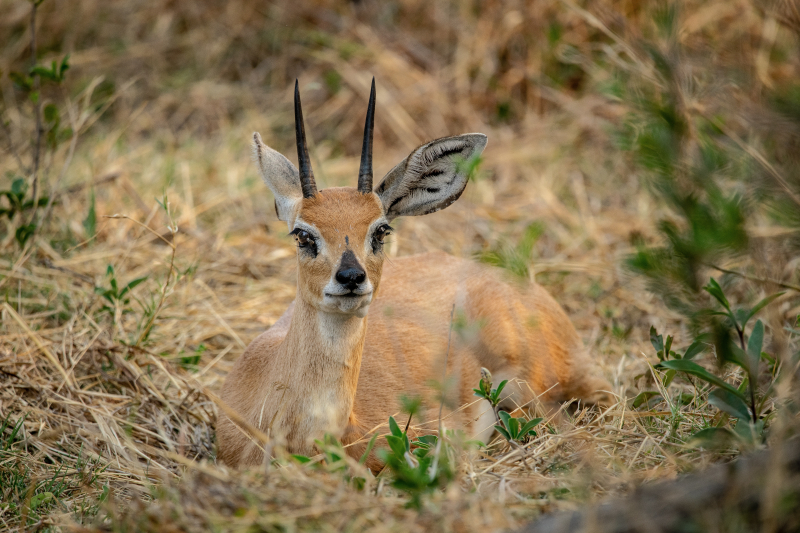
unsplash.com 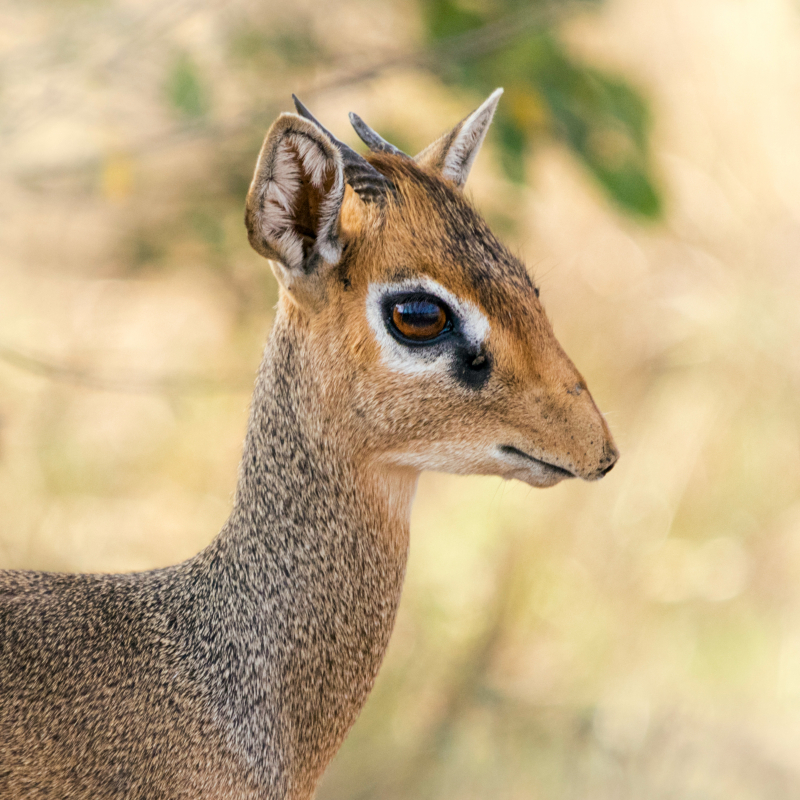
unsplash.com -
The Dipper, also known as Cinclus cinclus, is a small, plump, and short-tailed bird that belongs to the family Cinclidae. It is a unique bird species that is known for its ability to dive and swim underwater, making it one of the few bird species that can survive in aquatic habitats.
Dippers are found in fast-flowing rivers and streams in the mountainous regions of Europe, Asia, and North America. They have a characteristic bobbing motion when perched on rocks or branches near water, which is believed to help them see their prey more clearly.
Dippers have a unique physical appearance that sets them apart from other bird species. They have dark brown or black feathers, a white throat and breast, and a stubby, conical bill that is perfectly adapted for underwater feeding. They also have large, powerful legs and feet that are designed for swimming and holding onto rocks in fast-flowing water.
Dippers are highly adapted to their aquatic environment. They have a waterproof coat that keeps them warm and dry when submerged in cold water. Their feathers are dense and oily, which traps air and creates a layer of insulation. They also have a transparent third eyelid that protects their eyes while underwater.
Dippers feed primarily on aquatic insects, such as mayflies, caddisflies, and stoneflies. They forage by diving underneath the water's surface, where they use their sensitive feet to feel for their prey on the riverbed. Once they find an insect, they use their strong bills to capture and eat it.
Dippers are monogamous and breed in the spring. They build their nests in rock cavities or hollow trees, and lay 3-5 eggs that hatch after approximately two weeks. Both parents share the responsibility of incubating the eggs and feeding the chicks.
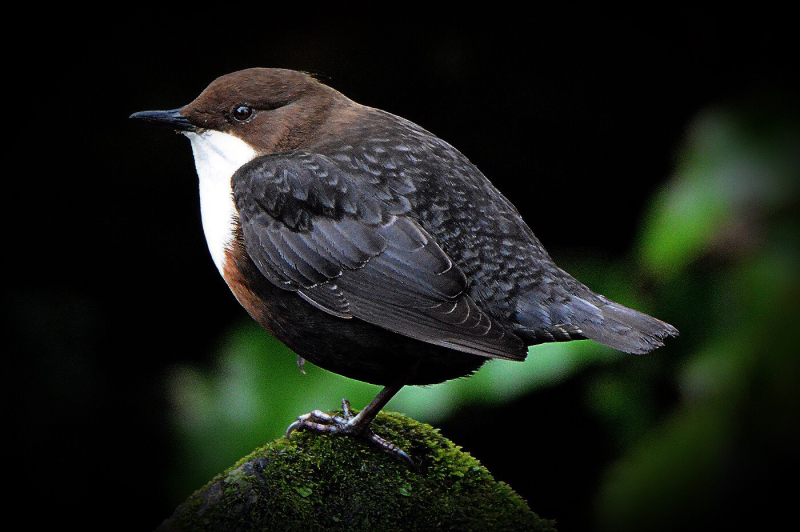
flickr.com 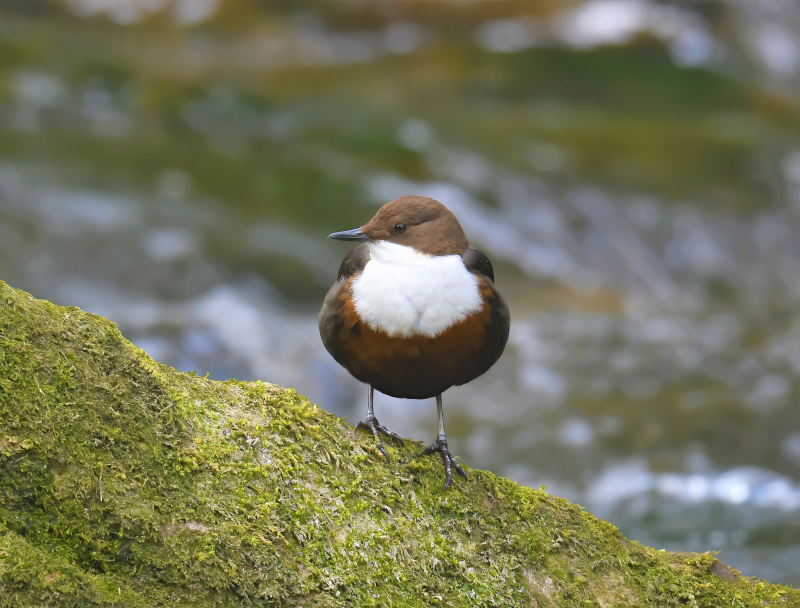
flickr.com -
The discus fish, scientifically known as Symphysodon, are a captivating and vibrantly colored species popular in the aquarium hobby. Renowned for their distinctive disc-shaped bodies and striking patterns, discus are native to the calm and warm waters of the Amazon River Basin in South America. These captivating fish have gained popularity not only for their aesthetic appeal but also for their unique behaviors and social interactions.
One of the most distinctive features of discus fish is their circular and laterally compressed bodies, resembling a saucer or disc, which gives them their common name. They come in a wide array of colors and intricate patterns, ranging from vibrant reds and blues to subtle earth tones. These color variations are often influenced by the fish's mood, environment, and overall health.
Discus fish are renowned for their complex behaviors and social interactions. In their natural habitat, these fish are known to form close-knit groups, seeking safety and companionship. In aquariums, discus thrive when kept in groups, and their social dynamics become apparent as they establish hierarchies within the school. Hobbyists appreciate the engaging behaviors of discus, which include intricate courtship rituals, collaborative parenting, and communal foraging.
Maintaining a suitable environment for discus is crucial for their well-being. They prefer aquariums with stable water conditions, slightly acidic to neutral pH levels, and temperatures between 82 to 86 degrees Fahrenheit (28 to 30 degrees Celsius), mimicking the warm waters of the Amazon. The aquarium setup should include ample hiding spots, plants, and driftwood to create a sense of security for the fish.
Feeding discus requires a well-balanced diet to support their health and vibrant colors. High-quality pellets, frozen or live foods, and specially formulated discus food contribute to their nutritional needs. Regular water changes and meticulous aquarium maintenance are essential to prevent stress and maintain optimal water quality.
Breeding discus fish is a rewarding yet intricate aspect of keeping these beautiful species. Successful breeding often involves creating the right conditions, including selecting compatible pairs, providing suitable spawning sites, and maintaining water quality. Discus are known for their attentive parenting; both parents actively participate in guarding and caring for their fry.
While discus fish are popular among experienced aquarium hobbyists, they require a commitment to proper care and attention. Due to their sensitivity to water conditions, enthusiasts often invest time in learning about their specific requirements to create a thriving and harmonious aquarium environment.
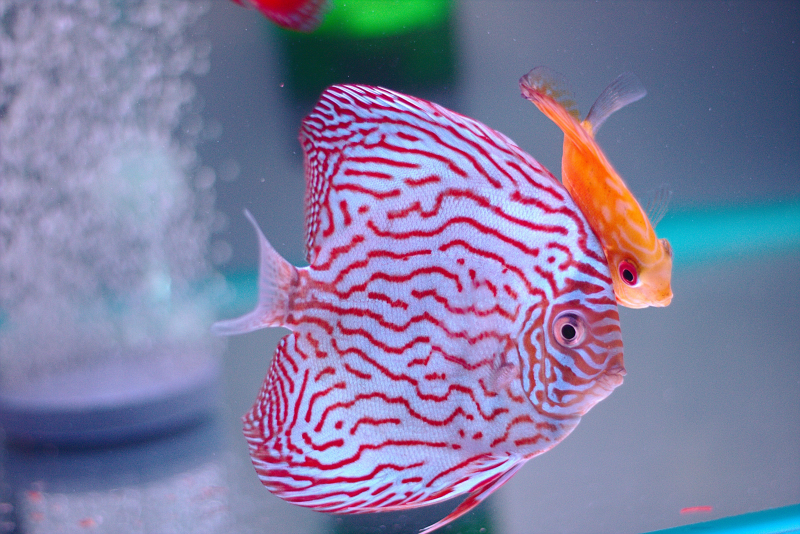
pexels.com 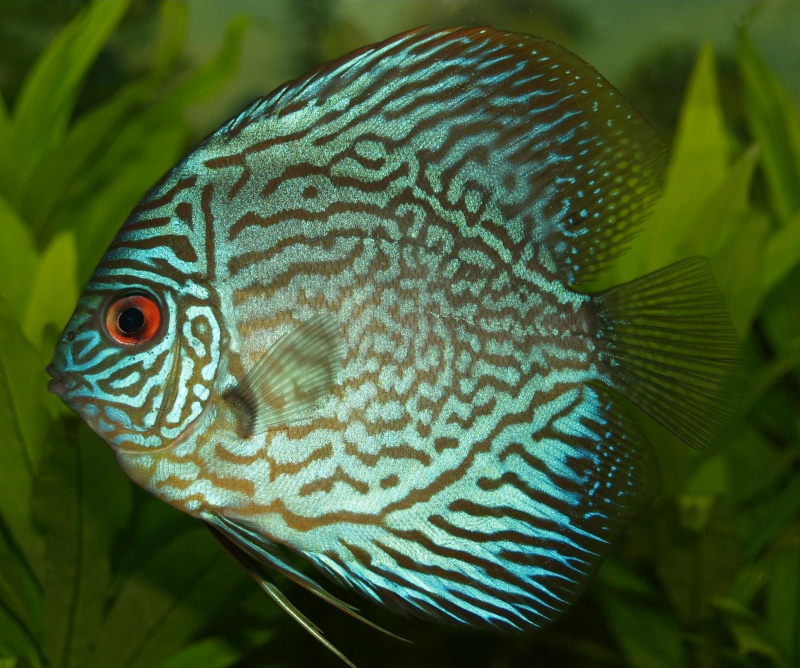
pexels.com -
The dodo, a now-extinct flightless bird, holds a special place in the annals of natural history as an emblem of human-induced extinction. Native to the island of Mauritius in the Indian Ocean, the dodo (Raphus cucullatus) became an unwitting victim of the Age of Exploration, ultimately disappearing from the face of the Earth.
The dodo, standing about three feet tall and characterized by a large, hooked beak, small wings, and a plump, ungainly body, was first encountered by Dutch sailors in the late 16th century. Unaccustomed to human presence and without natural predators on the isolated island of Mauritius, the dodo exhibited a lack of fear towards humans, a trait that would prove detrimental to its survival.
The dodo's flightlessness and trusting nature made it an easy target for sailors and the animals they introduced, such as rats, pigs, and monkeys. These invasive species wreaked havoc on the dodo's eggs, chicks, and habitat, leading to a rapid decline in its population. Additionally, human exploitation and habitat destruction contributed to the demise of the dodo.
By the mid-17th century, just a few decades after its discovery, the dodo had vanished from Mauritius. Due to the absence of proper documentation and the limited number of specimens collected, much of what is known about the dodo comes from historical accounts, sketches, and a few scattered remains. The extinction of the dodo is often considered one of the earliest documented cases of human-driven extinction, serving as a stark reminder of the impact that human activities can have on vulnerable species.
The dodo has become an iconic symbol of extinction and is often depicted in popular culture, literature, and art. Its name is synonymous with the tragic loss of biodiversity and the consequences of human actions on vulnerable ecosystems.
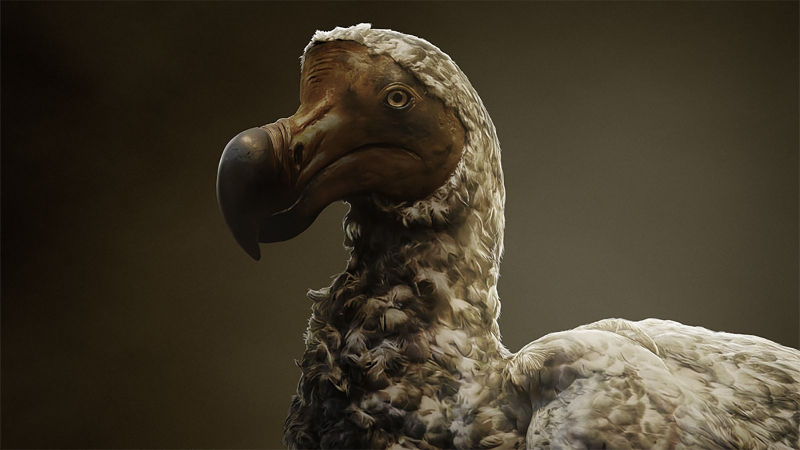
edition.cnn.com 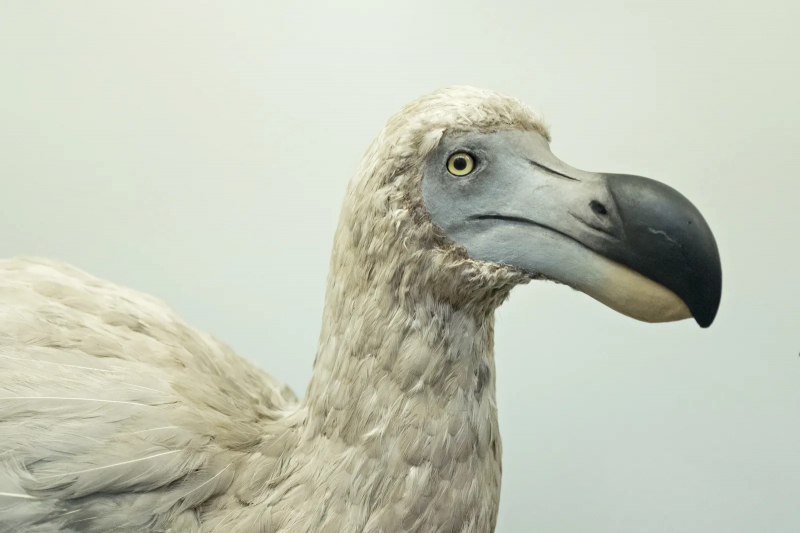
smithsonianmag.com -
Dolphins, members of the family Delphinidae, are highly intelligent and charismatic marine mammals that capture the imagination of people around the world. Known for their playful behavior, complex communication skills, and remarkable adaptations to life in the ocean, dolphins are a diverse group of species inhabiting various marine environments.
With nearly 90 different species, dolphins can be found in oceans, seas, and major river systems across the globe. They vary in size, coloration, and habitat preferences, but share common characteristics such as a streamlined body, a dorsal fin, and a friendly, social nature.
Dolphins are well-adapted to their aquatic lifestyle. Their bodies are streamlined, allowing them to move through the water with minimal resistance. The dorsal fin, which varies in shape and size among species, helps with stability and assists in regulating body temperature. Most dolphins have a layer of blubber under their skin, providing insulation and energy storage.
One of the most distinctive features of dolphins is their intelligence. They have large brains relative to body size and exhibit complex behaviors, problem-solving skills, and the ability to learn through social interactions. Dolphins are known for their playful antics, often seen riding waves, leaping out of the water, and engaging in social games. These behaviors not only serve as a form of entertainment but also contribute to group cohesion and communication.
Communication among dolphins is sophisticated and includes a combination of vocalizations, body language, and echolocation. An echolocation is a specialized form of communication where dolphins emit sound waves and interpret the echoes to navigate, locate prey, and communicate with one another. This ability is crucial for their survival in the underwater environment, where visibility is often limited.
Dolphins are social animals that form tight-knit groups, known as pods. These pods can vary in size from a few individuals to hundreds, depending on the species. Within a pod, dolphins exhibit strong social bonds, cooperate in hunting for prey, and support one another in times of distress.
The diet of dolphins varies depending on the species and available prey in their habitat. Most dolphins are carnivorous, feeding on fish and squid. Some species, like the killer whale or orca, are apex predators that can hunt and consume marine mammals.
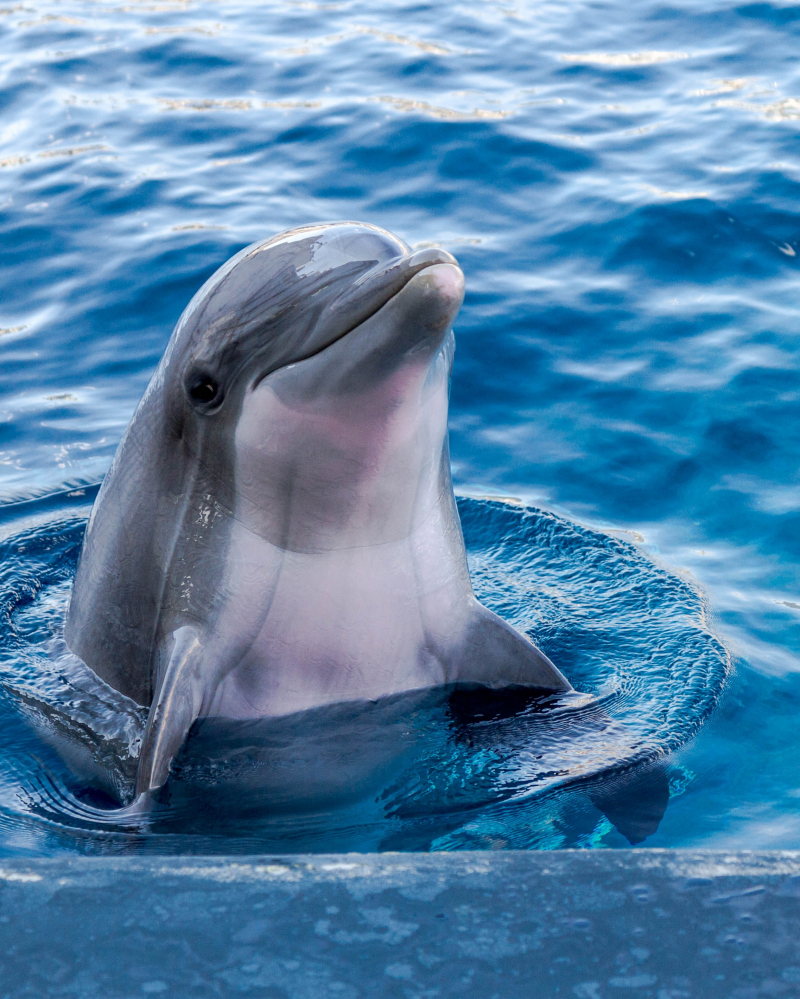
unsplash.com 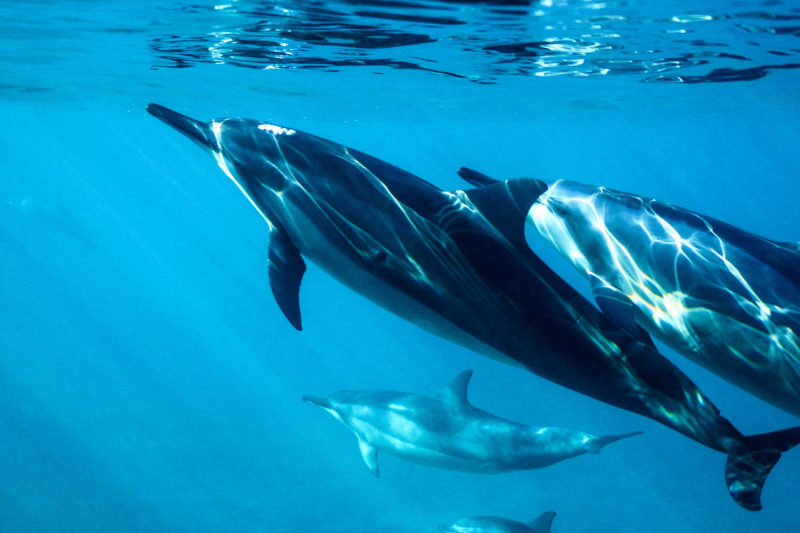
unsplash.com -
Donkeys, scientifically known as Equus africanus asinus, are domesticated members of the horse family, Equidae. Renowned for their sturdy build, distinctive long ears, and calm demeanor, donkeys have been integral to human societies for thousands of years, serving as valuable companions, beasts of burden, and reliable workers in various capacities.
Originating from Africa, donkeys have spread across the globe due to their adaptability and usefulness. They come in various sizes, colors, and coat patterns, but they generally share common physical features, including a stocky build, a short mane, and a tail with a tuft of hair at the end. Their large, expressive eyes and long ears contribute to their characteristic appearance.
One of the notable traits of donkeys is their intelligence and strong sense of self-preservation. Donkeys are known for being cautious and thoughtful, often assessing situations before reacting. This inherent wariness makes them well-suited for certain roles, particularly as pack animals in challenging terrains.
Donkeys are highly versatile and have been employed in a range of tasks throughout history. They have served as pack animals, carrying goods and supplies across rugged landscapes where other animals might struggle. Their surefootedness and ability to navigate steep and rocky terrain make them valuable assets in agriculture, particularly in developing countries where mechanized equipment may be limited.
In addition to their physical strength and utility, donkeys are recognized for their gentle and affectionate nature. They form strong bonds with their human caregivers and often display loyalty and trust. Donkeys can be trained for various roles, including riding, driving carts, and providing therapeutic support. Their calm demeanor and easygoing temperament make them suitable companions for people of all ages.
Donkey breeds vary, with some, like the miniature donkey, being smaller and others, like the Mammoth Jack, reaching larger sizes. Each breed has specific characteristics that make it well-suited for particular tasks or environments.
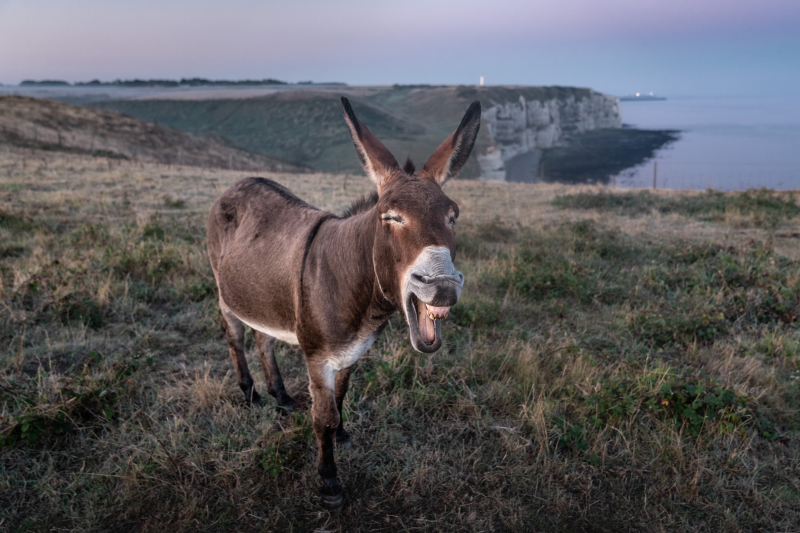
unsplash.com 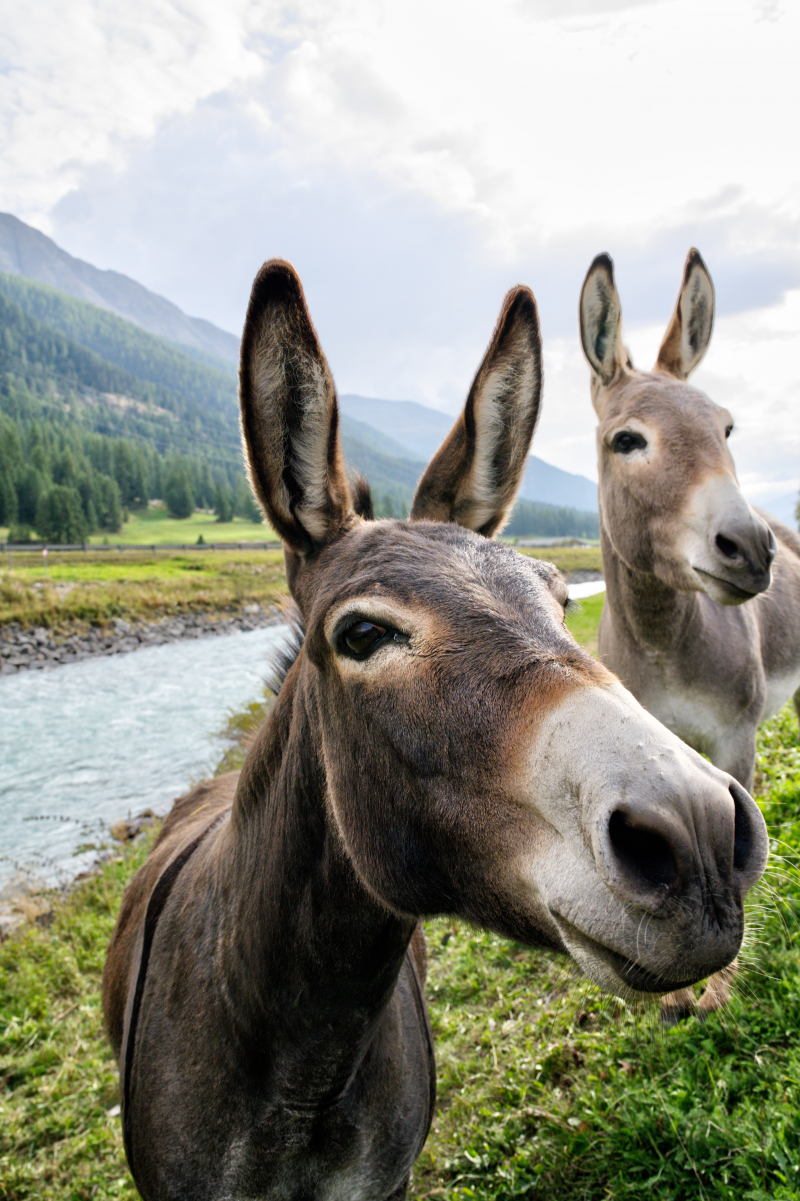
unsplash.com -
Ducks, members of the Anatidae family, are a diverse and widespread group of waterfowl known for their distinctive characteristics, adaptability, and ecological importance. Found in a variety of habitats, from freshwater lakes and rivers to coastal estuaries, ducks are a familiar and cherished part of the avian landscape worldwide.
One of the defining features of ducks is their distinctive webbed feet, an adaptation for efficient swimming. Their bodies are streamlined, with waterproof feathers that keep them buoyant and well-insulated in aquatic environments. Ducks come in an array of sizes, shapes, and colors, reflecting the diversity within the family. From the small, brightly colored teal species to the larger and more subdued mallards, ducks exhibit a wide range of plumage variations.
Ducks are omnivores with a varied diet that includes aquatic plants, insects, small fish, and crustaceans. Their feeding behavior often involves "dabbling," where they tip forward in the water, reaching submerged vegetation and invertebrates with their bills. Diving ducks, on the other hand, dive beneath the water's surface to forage for food. This diversity in feeding strategies allows ducks to exploit different niches within their habitats.
The social structure of ducks varies among species. While some are more solitary, others form large flocks, especially during migration. Migratory behavior is a notable aspect of duck biology, with many species undertaking long journeys between breeding and wintering grounds. These migrations play a crucial role in the distribution of nutrients, contribute to genetic diversity, and have cultural significance in many regions.
Ducks are also known for their quacking calls, although the vocalizations can vary widely among species. These calls serve various purposes, including communication within the flock, establishing territory, and signaling danger. Each species has its unique vocalizations, contributing to the rich auditory tapestry of wetland environments.
Due to their ecological importance, ducks play a key role in maintaining the balance of aquatic ecosystems. They contribute to nutrient cycling by consuming and excreting organic matter, help control insect populations, and disperse seeds through their movements. Additionally, ducks are a valuable resource for humans, providing a source of meat, eggs, and feathers.
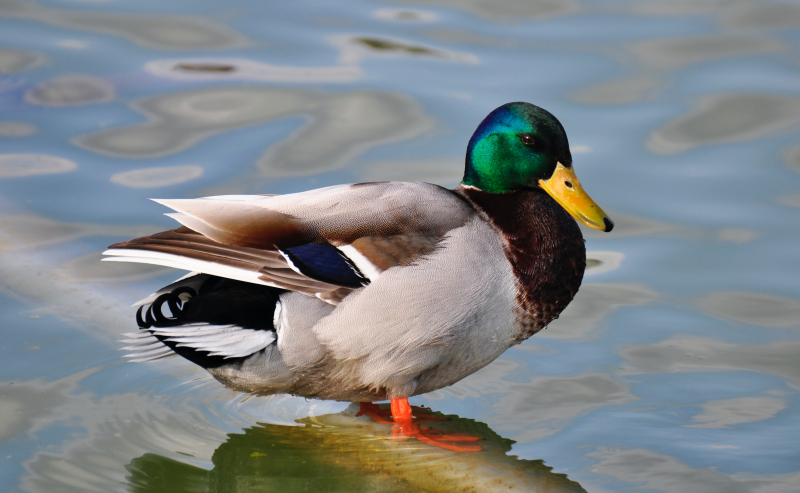
unsplash.com 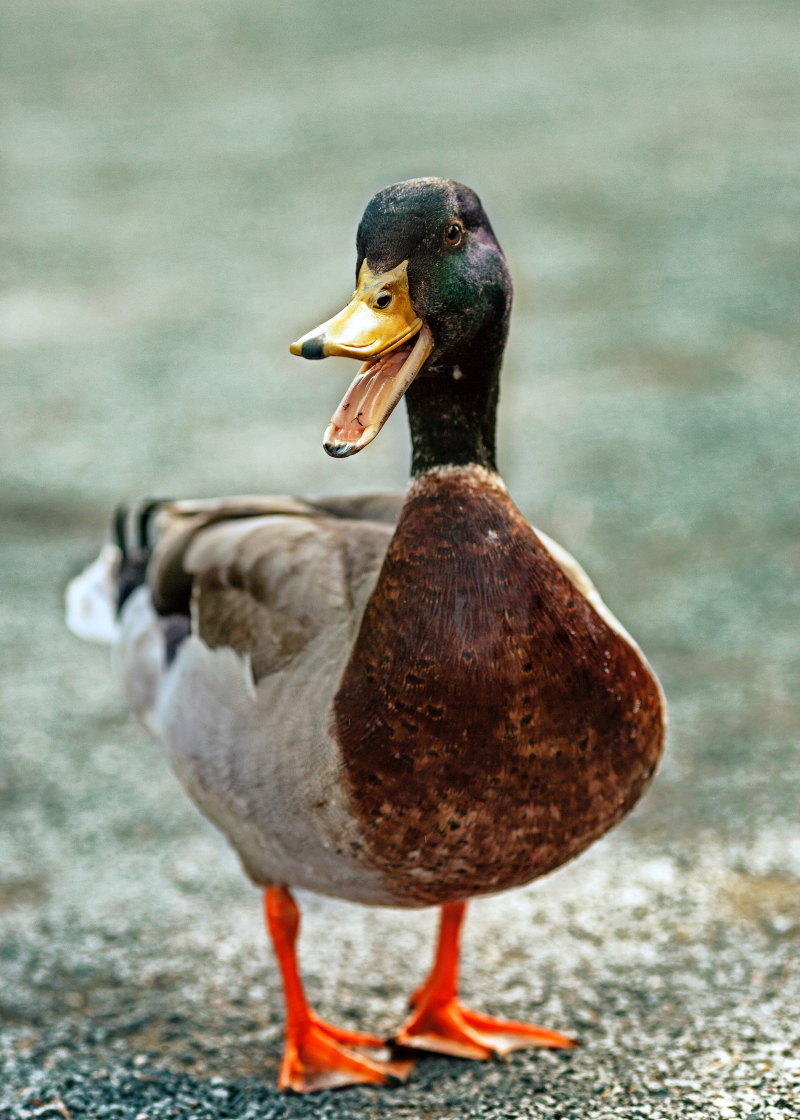
unsplash.com

















